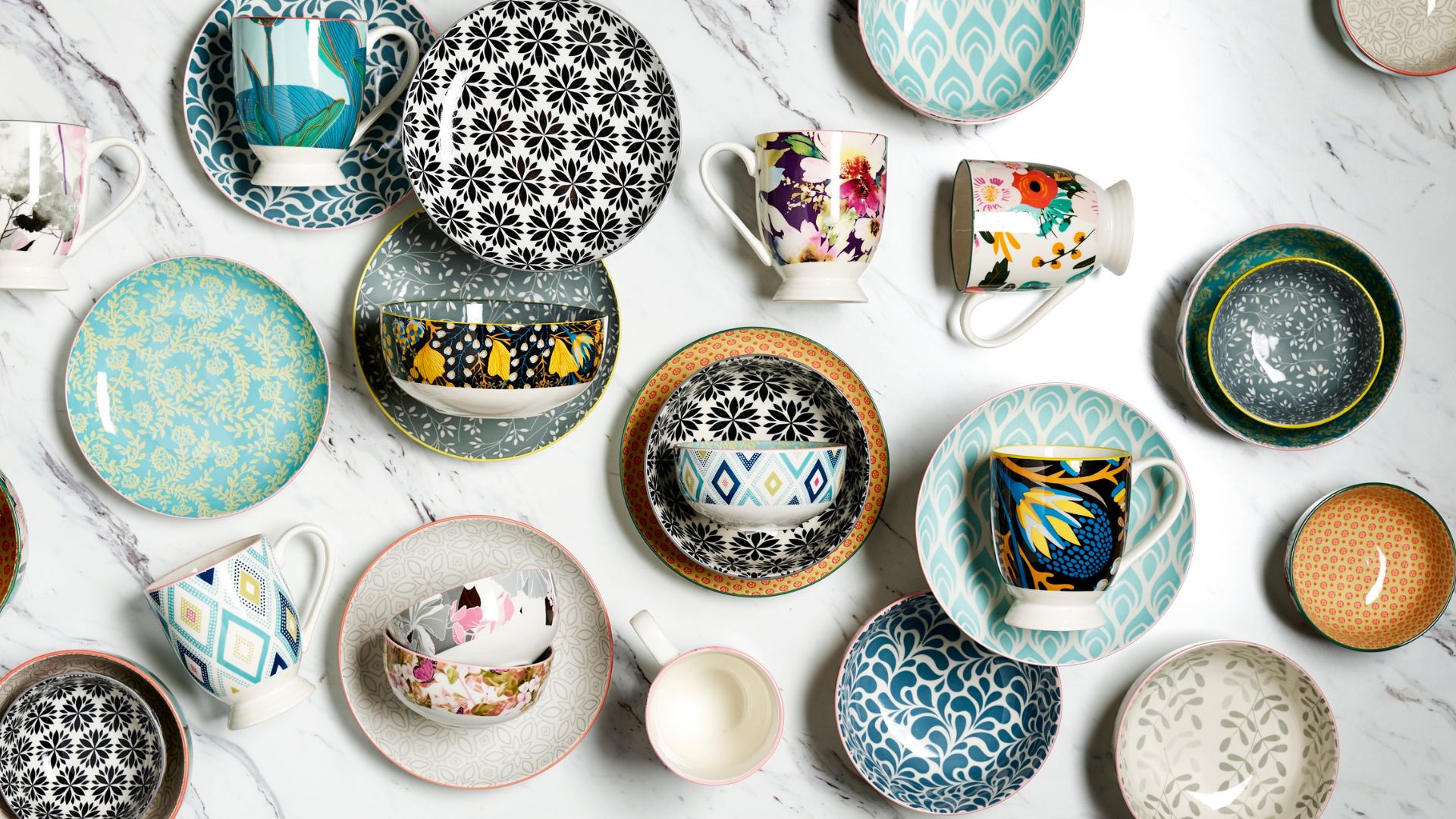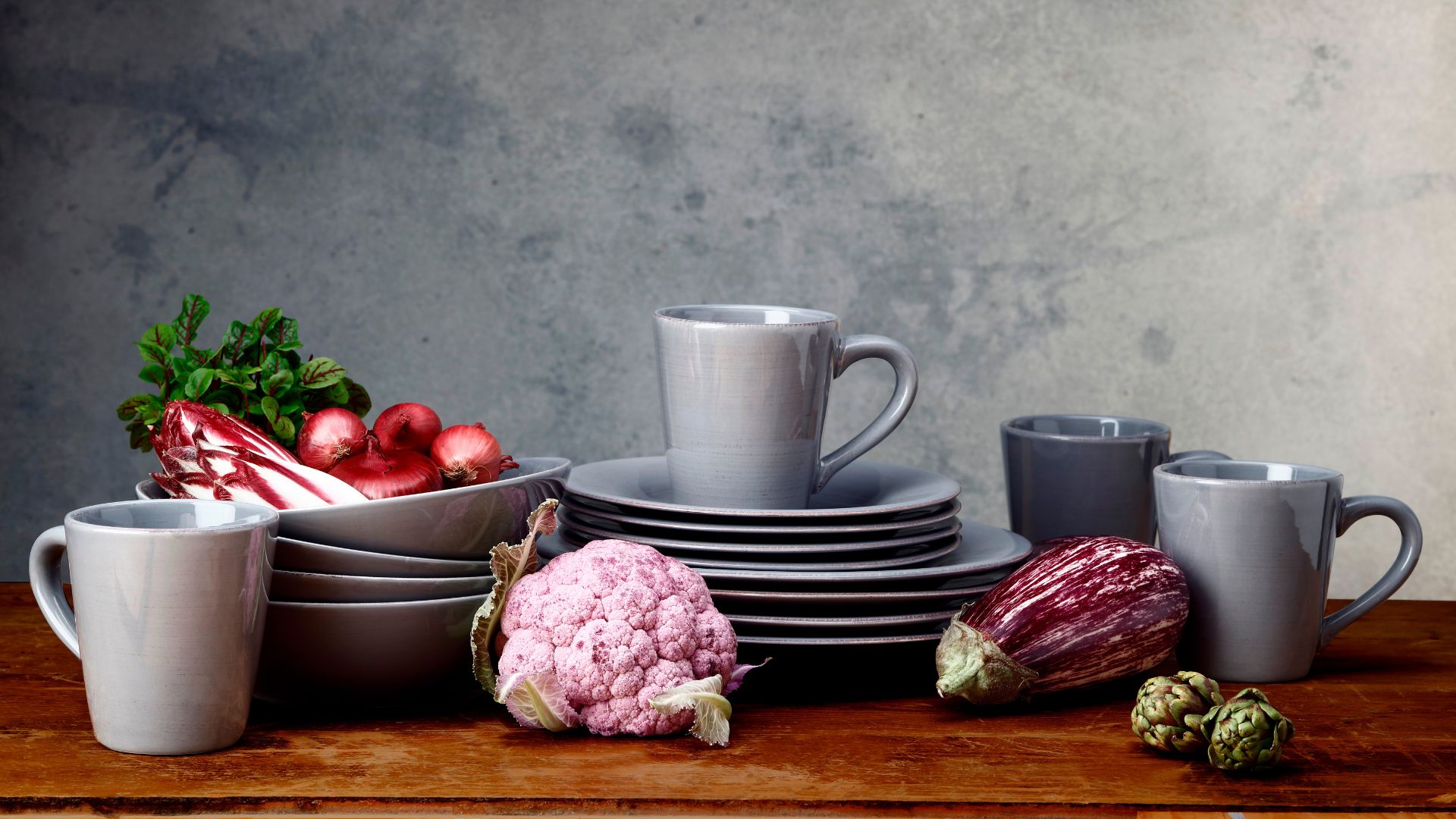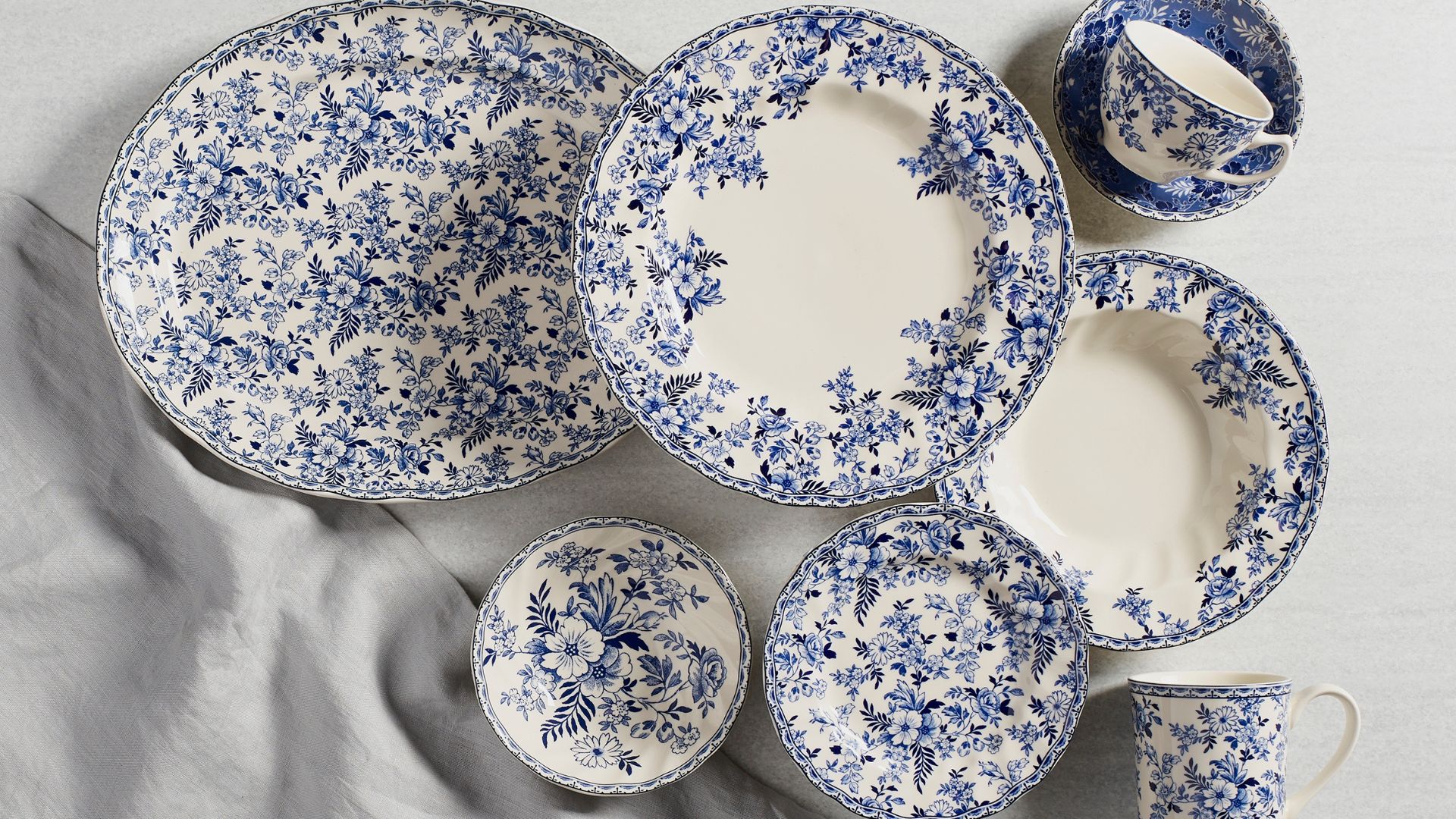 | ||
| Your browser is not supported. | ||
|
Please browse our site using any of the following options:
| ||
Ceramic Dinnerware Explained

While it won't contribute to the flavour of your meal, serving your food on the right dinnerware can go a long way to how much you and your guests enjoy your dinner. Whether you're setting the table for a casual dinner or creating a layered tablescape for a night of fine dining, ceramic plates, bowls and other dinnerware are always a great option! Ceramic dinnerware comes in a range of types, giving you variations in price, colour and durability, so you can always find some ceramic dinnerware to suit your needs.
At Spotlight we are pleased to offer you a quality range of ceramic dinnerware, both in handy dinnerware sets and as loose dinnerware. Our ceramic dinnerware comes in four types - earthenware, stoneware, porcelain and fine bone china. To help you choose which kind of ceramic dinnerware is right for you, this guide will detail all the qualities of each, as well as how to best care for and maintain them. If you've ever asked 'What is ceramic?', then this is the guide for you!
Quick Links
- How Are Ceramics Made?
- What Is Earthenware?
- What Is Stoneware?
- What Is Porcelain?
- What Is Bone China?
- How To Clean Ceramic
What Is Ceramic And How Are Ceramics Made?
Ceramics, in this case, refers to the range of dinnerware made from fired clay. To understand how the variations of ceramics differ, we need to first go into how they're made. Ceramics are made from clay that has been shaped (in our case into a bowl, plate, platter or mug) and then fired in a kiln. Kilns are special ovens created specifically for firing (or baking) pottery and reach very high temperatures of around 1300℃. These high temperatures cause the clay to melt and change into a more crystalline form (known as vitrifying), and separate glazes that add strength and shine can also be added between firing sessions.
What Is Earthenware?
Earthenware is the type of ceramic that is fired at the lowest temperature out of all of them, between 1000 to 1150℃. Earthenware requires the least amount of time and effort to make, and so is the most affordable - beginner pottery makers usually start out making earthenware because it typically only needs to be fired once and can be painted afterwards. Terracotta is a common type of earthenware, and any of the clay crafts you made in high school were probably earthenware as well!
Finished earthenware pieces are heavy, hard and brittle, with a rough feel and a porous structure that makes them unsuitable for use with liquids unless they are fired again or glazed. Earthenware is usually a dusty red, orange or brown colour, but are also easy to paint with acrylics which is why they're a favourite for kids' clay projects.
Because of its raw and brittle nature, earthenware is prone to chipping and so needs to be handled carefully. Unglazed earthenware is usually used for decorative purposes rather than functional, as there is less chance of damage occurring if it is just popped on a shelf for display, rather than being constantly handled as a piece of dinnerware.
What Is Stoneware?
The next step up in ceramic durability is stoneware, which is usually fired at temperatures between 1100 to 1300?. Stoneware partially vitrifies at this temperature, so you get a piece of dinnerware that is more durable, thick and smoother than earthenware - this also correlates to a small price increase. The smoothness that comes with vitrification means stoneware is resistant to moisture, and so is safe to use with liquids, but many stonewares are glazed anyway for aesthetic purposes.
Because of its density, stoneware is resistant to chipping, scratching and cracking, and its moisture resistance means it's safe to wash in the dishwasher. Most stoneware is also safe to microwave and freeze, although you should always check the packaging of your stoneware dinnerware to make sure.
Its affordable price and stylish look make it a great choice for everyday dining, and it comes in many beautiful, neutral colours like white, grey, charcoal, green and brown. Glazed stoneware has a glossy sheen, while unglazed stoneware has a more matte appearance. Both are well-suited for use at home, and it's a popular choice at restaurants too!

What Is Porcelain?
Fired at the highest temperature of all ceramics, between 1200 to 1400℃, porcelain is the kind of ceramic you show off for special occasions - although it's certainly durable enough for everyday use! It's made from a clay mineral called kaolinite, also known as kaolin, and when fired it becomes extremely hard. Porcelain dinnerware is known for being thin, delicate and somewhat translucent, yet despite its thinness, it is more durable than stoneware and earthenware creations.
Like stoneware, porcelain doesn't need to be glazed but many prefer to add a glaze for a smooth and shiny coating. Porcelain is often painted between firings, as its white colour makes it the ideal base for decoration, and it can sometimes even have metallic edges for extra elegance.
Porcelain is dishwasher, microwave and freezer safe. However, those with metallic accents should not be used in the microwave and must be hand-washed to avoid any detergent damaging the decals.
Porcelain is expensive, due to the difficulty faced when creating it, hence why many like to only bring it out on special occasions. Its beautiful translucency and delicate feel make porcelain the perfect dinnerware material if you're planning on hosting a formal dinner or two!
What Is Bone China?
Our final ceramic, bone china, is the hardest, most transparent type you can find. It looks similar to porcelain, with a white colour and delicate look, but has been made with bone ash added to the clay mix. Bone china tends to be lighter than porcelain and has a warmer, off-white look compared to the snow white of porcelain, due to the presence of the bone ash. It is also more transparent than porcelain because it is so thin and light.
Sometimes you will come across bone china which is called fine bone china - this is when bone china is taken to the extremes of thinness and durability. It usually contains more bone ash, sometimes up to 45% in the most exquisite pieces!
Bone china can be cleaned and cared for similarly to porcelain - its extreme thinness means it must be handled with care, so even if it is dishwasher safe, a gentle handwash may be preferable anyway.
How To Clean Ceramic Dinnerware
How you clean your ceramic dinnerware will depend on which type you have.
- Because it is porous if left unglazed, earthenware should not be washed, either by hand or in the dishwasher. If needed, you can wipe it down with a damp sponge, then leave it somewhere warm to dry.
- Stoneware can be washed in the dishwasher with a regular detergent.
- Wondering how to clean porcelain when it's so delicate? Porcelain is dishwasher safe, but particularly thin and delicate pieces should be gently hand-washed to prevent breaking. Avoid using acidic detergents on metallic trims, as it can cause them to discolour.
Avoid using steel wool and very stiff brushes on ceramic as you may scratch the surface. Stick to a soft sponge, a cloth or even your hands, just to be safe!

Enjoy Quality Ceramic Dinnerware From Spotlight
Have you decided which kind of ceramic dinner you'd like to try? You can find all of them in the tableware collection at Spotlight! Shop online, safely pay and we'll deliver your ceramic dinnerware straight to your front door. Otherwise, visit your nearest Spotlight store and our friendly team will help you find the right ceramics for your needs!
For more information on what to buy for your dining table, check out our buying guides on dinnerware, servingware and cookware. And for fun ideas and inspiration, read our guides on making pottery for beginners, using polymer clay and everyday tablescaping ideas.




